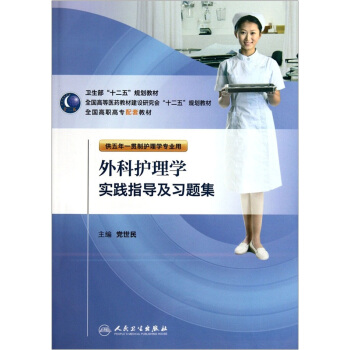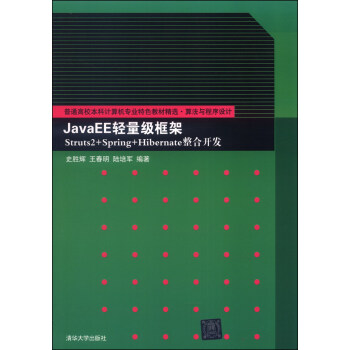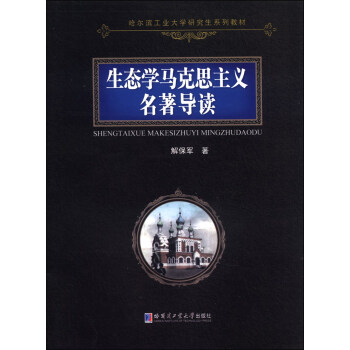![固态物理学基础 [Elementary Solid State Physics]](https://pic.windowsfront.com/10914290/caedf9a8-c96f-4ad2-9c69-024995898436.jpg)

具体描述
内容简介
《固态物理学基础》是一部优秀的介绍固态物理学入门类书籍,也是一本很好的本科生教材。《固态物理学基础》是1975年版本的修订版,在原来的基础上做了不少改进。内容安排结构紧凑,合理,逻辑性强。尽管本书出版的比较早,但不失经典,覆盖面广,囊括了许多读者了解的话题,如,半导体设备和议题,液态晶体,聚合体和一些生物分子。大量的实用案例是本书的一大特色,更加增强了本书的可读性。目次:晶体结构和原子间作用力;x射线,中子和晶体中的电子偏移;格振动:热力学,声学和光学性质;金属ⅰ:自由电子模型;金属ⅱ:固体中的能级;半导体ⅰ:理论;半导体ⅱ:设备;电介体和固体的光学性质;磁性和磁共振;超导体;冶金学议题和固体中的缺陷;材料和固态化学;固态生物化学。附录:量子力学基础。读者对象:物理,应用物理专业的本科生,研究生以及相关工程领域的科研人员。
内页插图
目录
chapter 1 crystal structures and interatomic forces1.1 introduction
1.2 the crystalline state
1.3 basic definitions
1.4 the fourteen bravais lattices and the seven crystal systems
1.5 elements of symmetry
1.6 nomenclature of crystal directions and crystal planes; miller indices
1.7 examples of simple crystal structures
1.8 amorphous solids and liquids
1.9 interatomic forces
1.10 types of bonding
chapter 2 x-ray, neutron, and electron diffraction in crystals
2.1 introduction
2.2 generation and absorption of x-rays
2.3 bragg's law
2.4 scattering from an atom
2.5 scattering from a crystal
2.6 the reciprocal lattice and x-ray diffraction
2.7 the diffraction condition and bragg's law
2.8 scattering from liquids
2.9 experimental techniques
2.10 other x-ray applications in solid-state physics
2.11 neutron diffraction
2.12 electron diffraction
chapter 3 lattice vibrations: thermal, acoustic, and optical properties
3.1 introduction
3.2 elastic waves
3.3 enumeration of modes; density of states of a continuous medium
3.4 specific heat: models of einstein and debye
3.5 the phonon
3.6 lattice waves
3.7 density of states of a lattice
3.8 specific heat: exact theory
3.9 thermal conductivity
3.10 scattering of x-rays, neutrons, and light by phonons
3.11 microwave ultrasonics
3.12 lattice optical properties in the infrared
chapter 4 metals i: the free. electron model
4.1 introduction
4.2 conduction electrons
4.3 the free-electron gas
4.4 electrical conductivity
4.5 electrical resistivity versus temperature
4.6 heat capacity of conduction electrons
4.7 the fermi surface
4.8 electrical conductivity; effects of the fermi surface
4.9 thermal conductivity in metals
4.10 motion in a magnetic field: cyclotron resonance and the hall effect
4.11 the ac conductivity and optical properties
4.12 thermionic emission
4.13 failure of the free-electron model
chapter 5 metals il: energy bands in solids
5.1 introduction
5.2 energy spectra in atoms, molecules, and solids
5.3 energy bands in solids; the bloch theorem
5.4 band symmetry in k-space; brillouin zones
5.5 number of states in the band
5.6 the nearly-free-electron model
5.7 the energy gap and the bragg reflection
5.8 the tight-binding model
5.9 calculations of energy bands
5.10 metals, insulators, and semiconductors
5.11 density of states
5.12 the fermi surface
5.13 velocity of the bloch electron
5.14 electron dynamics in an electric field
5.15 the dynamical effective mass
5.16 momentum, crystal momentum, and physical origin of the effective mass
5.17 the hole
5.18 electrical conductivity
5.19 electron dynamics in a magnetic field: cyclotron resonance and the hall effect
5.20 experimental methods in determination of band structure
5.21 limit of the band theory; metal-insulator transition
chapter 6 semiconductors i: theory
6.1 introduction
6.2 crystal structure and bonding
6.3 band structure
6.4 carrier concentration; intrinsic semiconductors
6.5 impurity states
6.6 semiconductor statistics
6.7 electrical conductivity; mobility
6.8 magnetic field effects: cyclotron resonance and hall effect
6.9 band structure of real semiconductors
6.10 high electric field and hot electrons
6.11 the gunn effect
6.12 optical properties: absorption processes
6.13 photoconductivity
6.14 luminescence
6.15 other optical effects
6.16 sound-wave amplification (acoustoelectric effect)
6.17 diffusion
chapter 7 semiconductors ii: devices
7.1 introduction
7.2 the p-n junction: the rectifier
7.3 the p-n junction: the junction itself
7.4 the junction transistor
7.5 the tunnel diode
7.6 the gunn diode
7.7 the semiconductor laser
7.8 the field-effect transistor, the semiconductor lamp, and other devices
7.9 integrated circuits and microelectronics
chapter 8 dielectric and optical properties of solids
8.1 introduction
8.2 review of basic formulas
8.3 the dielectric constant and polarizability; the local field
8.4 sources of polarizability
8.5 dipolar polarizability
8.6 dipolar dispersion
8.7 dipolar polarization in solids
8.8 ionic polarizability
8.9 electronic polarizability
8.10 piezoelectricity
8.11 ferroelectricity
chapter 9 magnetism and magnetic resonances
9.1 introductio
9.2 review of basic formulas
9.3 magnetic susceptibility
9.4 classification of materials
9.5 langevin diamagnetism
9.6 paramagnetism
9.7 magnetism in metals
9.8 ferromagnetism in insulators
9.9 antiferromagnetism and ferrimagnetism
9.10 ferromagnetism in metals
9.11 ferromagnetic domains
9.12 paramagnetic resonance; the maser
9.13 nuclear magnetic resonance
9.14 ferromagnetic resonance; spin waves
chapter 10 superconductivity
10.1 introduction
10.2 zero resistance
10.3 perfect diamagnetism, or the meissner effect
10.4 the critical field
10.5 thermodynamics of the superconducting transition
10.6 electrodynamics of superconductors
10.7 theory of superconductivity
10.8 tunneling and the josephson effect
10.9 miscellaneous topics
chapter 11 topics in metallurgy and defects in solids
11.1 introduction
11.2 types of imperfections
11.3 vacancies
11.4 diffusion
11.5 metallic alloys
11.6 dislocations and the mechanical strength of metals
11.7 lonic conductivity
11.8 the photographic process
11.9 radiation damage in solids
chapter 12 materials and solid-state chemistry
12.1 introduction
12.2 amorphous semiconductors
12.3 liquid crystals
12.4 polymers
12.5 nuclear magnetic resonance in chemistry
12.6 electron spin resonance in chemistry
12.7 chemical applications of the msssbauer effect
chapter 13 solid.state biophysics
13.1 introduction
13.2 biological applications of delocalization in molecules
13.3 nucleic acids
13.4 proteins
13.5 miscellaneous topics
appendix elements of quantum mechanics
a.1 basic concepts
a.2 the schrsdinger equation
a.3 one-dimensional examples
a.4 the angular momentum
a.5 the hydrogen atom; multielectron atoms; periodic table of the el
a.6 perturbation theory
a.7 the hydrogen molecule and the covalent bond
a.8 directed bonds
index
前言/序言
用户评价
这本书给我的最大感受,就是它的“重量”。不是说它有多厚,而是说它所承载的知识的深度和广度,让我觉得它是一本可以反复阅读,并且每次都会有新发现的书。我印象最深刻的是关于电子在周期势中的运动的章节,作者非常详细地阐述了 Bloch 定理的推导和意义。一开始,我只是觉得它听起来很高大上,但当作者一步步展示了如何从薛定谔方程出发,推导出周期性边界条件下的本征态,以及如何理解 Bloch 波的性质时,我才真正体会到这个定理的精妙之处。书中的数学推导非常详尽,每一步都写得清清楚楚,但即便如此,我还是需要反复地暂停,去对照课本上关于群论和周期函数的内容,才能确保自己完全理解了其中的逻辑。我尤其喜欢书中对“能带”概念的解释,它不仅仅是简单地给出图示,还结合了有效质量、导带、价带等一系列相关概念,并且试图解释为什么材料会有导电、绝缘或半导体的性质。这让我感觉不仅仅是在学习一个概念,而是在构建一个完整的物理图像。虽然有些章节,特别是涉及到更复杂的晶体缺陷或者磁性的部分,我目前还只能是“看个大概”,但这本书无疑为我提供了一个非常扎实的理论框架,让我对固态物理的理解,不再是零散的碎片,而是开始形成一个有机的整体。
评分这套书实在是太太太……让我不知道该从何说起了。我记得我拿到这本书的时候,心里是带着一种对“基础”二字的虔诚与期待。毕竟,在我浅薄的认知里,“基础”就意味着是万丈高楼的地基,是学科的起点,是理解更深层次内容前必不可少的铺垫。然而,当我翻开第一页,那些熟悉的、又带着一丝陌生的概念如同潮水般涌来,我感觉自己像是被抛进了一个巨大的知识海洋,而我之前积累的零星的岛屿,瞬间显得微不足道。书中的每一个公式,每一个图表,都好像在无声地诉说着一个我尚未领悟的真理。我曾试图抓住其中一个点,比如晶格振动,我以为自己理解了声子,可当我继续往下读,发现它与电子的相互作用、与能带结构的关联,又让我陷入了新的困惑。那种感觉,就像是在爬一座陡峭的山,每爬一步,视野虽然开阔了一些,但同时也看到了更高更远的山峰,感觉自己离顶峰似乎更远了。这本书的严谨性是毋庸置疑的,它的逻辑清晰得像手术刀一样锋利,毫不留情地剖析着物理世界的本质。但正是这种深刻,让我感到一种深深的无力感。我不得不承认,我可能还没有准备好,或者说,我需要更多的时间和精力去消化它。它不是那种读完就能立刻“懂了”的书,它更像是一本需要反复研磨、反复思考的“字典”,每次翻阅,都能从中汲取新的养分,发现新的启示。对我而言,它更像是一个长期的学习伙伴,而不是一个速成的指南。
评分我最近在学习固态物理,偶然间看到了这本书,想说实话,这本书带给我的感觉是……怎么形容呢,就像是一个经验丰富的老师,在耐心地向你讲解一个非常复杂的问题,但同时又不会省略掉任何一个关键的细节。我之前对一些概念,比如晶格振动,也看过其他的资料,但总感觉解释得不够透彻,或者说,让我感到“似懂非懂”。而这本书在讲解这些内容时,用了非常严谨的数学语言,但又辅以大量的图示和类比,这使得那些抽象的概念变得生动起来。我记得在学习弹性理论时,书中不仅给出了应力和应变的定义,还详细讲解了杨氏模量、泊松比等参数的物理意义,并且通过一个简单的模型,展示了这些参数是如何影响材料的形变的。这让我对材料的力学性能有了更直观的认识。更让我感到惊喜的是,这本书并没有停留在静态的描述,而是深入到动态的过程,比如晶格缺陷的形成和运动,以及它们对材料性质的影响。书中对这些内容的阐述,充满了物理洞察力,让我感觉自己不仅仅是在学习公式和定理,而是在探索物理现象背后的本质。虽然有些地方的数学推导对我来说依然很有难度,但我感觉这本书提供了一个非常好的学习路径,让我能够逐步深入,去理解固态物理的精髓。
评分说实话,拿到这本《固态物理学基础》的时候,我并没有抱太大的期望,我只是想找一本能让我对固态物理有个初步了解的书,毕竟这门课对我来说还是比较陌生的。但这本书带给我的惊喜,确实是出乎意料的。它没有上来就堆砌大量晦涩难懂的数学公式,而是用一种比较循序渐进的方式,从最基本的晶体结构讲起,一点点地深入。那些抽象的概念,比如布里渊区、倒格矢,在作者的阐释下,似乎变得不那么令人望而生畏了。我特别喜欢书中那些图示,它们清晰地描绘了各种晶格结构、倒格矢的几何关系,甚至连一些复杂的能量分布图,也处理得非常直观。这极大地帮助我建立起了空间想象能力,让我能更好地理解那些抽象的物理模型。而且,作者在讲解每一个概念时,都会给出一些简单的例子,虽然这些例子本身可能也需要一些背景知识,但至少提供了一个切入点,让我不会完全摸不着头脑。我记得在学习能带理论的时候,书中通过类比电子在周期势中的运动,一步步引出了能带的概念,这种讲解方式让我感觉自己像是跟着作者一起在探索这个领域,而不是被动地接受知识。虽然某些部分我还是需要反复阅读,或者参考其他的资料来加深理解,但总体来说,这本书的引导性非常强,让我感觉固态物理并不是一个遥不可及的领域,而是可以通过努力去掌握的。
评分从一个完全没有接触过固态物理的学生角度来看,这本书给我的感觉是……相当有挑战性。我之前以为“基础”就意味着简单明了,但这本书显然不是走这条路的。它似乎直接就瞄准了那些真正理解固态物理的核心概念所必需的深度,并没有为了降低门槛而牺牲掉关键的细节。当我第一次看到费米能、布里渊区这些词的时候,我感到一阵眩晕。书中的推导过程非常严谨,逻辑链条紧密得几乎没有缝隙,但也正因为如此,一旦你在某一步跟不上,后面的内容就会变得难以理解。我尝试着去理解德布罗意波在晶格中的衍射,以及由此产生的布里渊区的概念,但即便是最基础的倒格矢的定义,我也需要反复琢磨,才能勉强抓住其中的要义。这本书的语言风格也非常学术化,充满了专业术语,而且常常使用一些我之前从未接触过的数学工具,比如群论、傅里叶变换等。虽然我知道这些工具是理解固态物理不可或缺的,但对我来说,这就像是在学习一门新的语言,需要先掌握一套全新的语法和词汇。我花了很多时间去查阅相关的背景知识,试图将书中的内容与我已有的物理知识联系起来,但效果并不总是如我所愿。这本书更像是一本“百科全书”式的参考书,它提供了非常全面和深入的内容,但使用者需要具备相当的预备知识,才能真正地从中受益。
评分经典教材,值得买!很适合做参考书!
评分给单位买的,很不错。
评分经典教材,值得买!很适合做参考书!
评分给单位买的,很不错。
评分给单位买的,很不错。
评分经典教材,值得买!很适合做参考书!
评分给单位买的,很不错。
评分经典教材,值得买!很适合做参考书!
评分给单位买的,很不错。
相关图书
本站所有内容均为互联网搜索引擎提供的公开搜索信息,本站不存储任何数据与内容,任何内容与数据均与本站无关,如有需要请联系相关搜索引擎包括但不限于百度,google,bing,sogou 等
© 2025 book.coffeedeals.club All Rights Reserved. 静流书站 版权所有







![媒介融合导论/21世纪新闻与传播学应用型本科规划教材·网络与新媒体系列 [Introduction to Media Convergence] pdf epub mobi 电子书 下载](https://pic.windowsfront.com/11352259/rBEhWFKDVRsIAAAAAAIbxQM_R1oAAFcSgAUpboAAhvd925.jpg)










![有机化学(第3版)/“十二五”普通高等教育本科国家级规划教材·普通高等教育“十一五”国家级规划教材 [Organic Chemistry] pdf epub mobi 电子书 下载](https://pic.windowsfront.com/11684726/554ffff2N436751d5.jpg)

![工程伦理学/高等学校工程管理系列经典教材 [Engineering Ethics] pdf epub mobi 电子书 下载](https://pic.windowsfront.com/11692245/557562faN74080783.jpg)